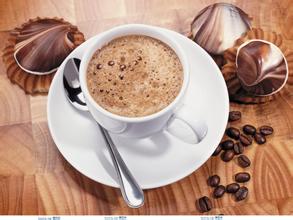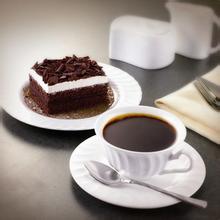Honey-treated coffee beans what is the difference in flavor description of sun-washed coffee beans
Honey-treated coffee beans what is the difference in flavor description of sun-washed coffee beans
Semi-washing method: first remove the skin with water, and then go to the sun. This is a relatively new and rare method. This method is only suitable for specific areas of some countries, with a long drying period. The coffee produced by this method is sticky, and the mucus is not removed as it is fermented in the tank. Therefore, the coffee produced by this semi-washing method contains the characteristics of both washing and drying. The acidity, sweetness, seasoning, and flavor of the coffee are all quite good; the disadvantage is that the coffee taste is not as strong as that produced by pure drying or washing. Skin/Pulp: the outermost layer of coffee beans is covered with berry-like skin and pulp. In addition to the natural sun method, coffee beans treated by other methods must remove the skin and flesh within a few hours after picking. For coffee, peel and pulp are important by-products. In some places, people use the peel and pulp of coffee to make tea. People in the industry are accustomed to calling the skin and pulp of coffee "Pulp", while the machine used to remove the pulp is called "desizing machine".
two。 Mucous membrane (Mucilage): under the skin and pulp, a thick layer of mucus tightly wraps the coffee beans. Because this mucous membrane is extremely sticky and high in sugar, it is used to call it "Honey". Not only coffee, but also many fruits have a layer of mucus inside.
3. Parchment (Parchment): inside the mucous membrane, a thin film of cellulose surrounds the coffee beans. After drying, the film looks like parchment, hence the name.
4. SilverSkin/Chaff: there is a thinner film inside the parchment that wraps the coffee beans. Because the color is glossy and silvery, people used to call it "silver skin". This layer of silver will fall off during baking. Usually when you grind the coffee, you find some silver crumbs in the coffee powder. These crumbs are the silver skins that cannot be peeled off from coffee beans during baking.
Another step: according to different needs, adjust the setting of the pectin removal machine so that the parchment shell retains different proportions of pectin, and then reduce the water content of raw beans to 10% Mel 12% by either solarization or machine drying or a combination of both.
Raw beans treated by water washing and fermentation generally have less silver skin attached, but unripe beans retain most of the silver skin. Natural all-day sun and honey-treated raw beans, depending on the amount of pectin retained (more or less honey), more or less silver skin will stick to the coffee beans, and show different shades of orange.
When choosing honey to deal with the defects of raw beans, you need to scrape off the silver skin to observe the color of the coffee beans themselves. Honey treatment of raw beans in baking should also pay attention to, if a large number of silver skin can not be discharged in time, the high temperature will scald the surface of coffee beans, resulting in inconsistent baking color.
In general, raw beans dried in the sun are bluer and greener and more uniform than those dried by machines. The water content of raw beans can not be judged simply according to the color depth. The best water content of raw beans is 9% Murray 12%. The water content of raw beans must be well controlled in storage. Once the water content exceeds 13%, raw beans are easy to breed toxins.

Important Notice :
前街咖啡 FrontStreet Coffee has moved to new addredd:
FrontStreet Coffee Address: 315,Donghua East Road,GuangZhou
Tel:020 38364473
- Prev

Introduction to the course of how to press down the milk custard to make coffee flower
A tutorial on how to press down the milk to blister: if you are distracted or not focused enough, it is easy to cause the steam pipe to be above the surface of the milk rather than just below it. The result is milk spatter and larger milk bubbles. Of course, you can still get a lot of foam in the flower cup, but the mouth
- Next

Can you pull flowers with the foam made by the foam maker? Introduction to the skills of milk foam
Can you pull flowers with the foam made by the foam maker? Milk foam skills introduce the heating of milk to 65 degrees 1. Put the foam stick to the bottom, center it into the air, and pass two to three seconds. Move the bubble stick a little bit, do not enter more air, only hit the vortex, so that the vortex can be involved in thicker bubbles, hit 3. 5%. Keep beating for 20 to 30 seconds and let the milk boil. Mix milk foam and milk evenly to the liquid level.
Related
- What is the meaning of lactic acid fermentation with coffee bean treatment?
- How to judge the state of foam by sound?
- How does the latte pull out the unicorn pattern? Come to get for a little trick to improve the flower pull!
- Will flower pulling affect the taste of the latte?
- Do you know the history of coffee?
- The difference between honey treatment and sun washing what is raisin honey treatment?
- What kind of milk can a novice use to make coffee foam to keep the foam longer? The correct method and skills of milking tutorial sharing
- Why do washed coffee beans taste sour? Flavor characteristics of washed Coffee
- Introduction to the skill of how to practice the size and height of water injection around the circle of hand-brewed coffee
- How do beginners practice coffee flower drawing from scratch?

